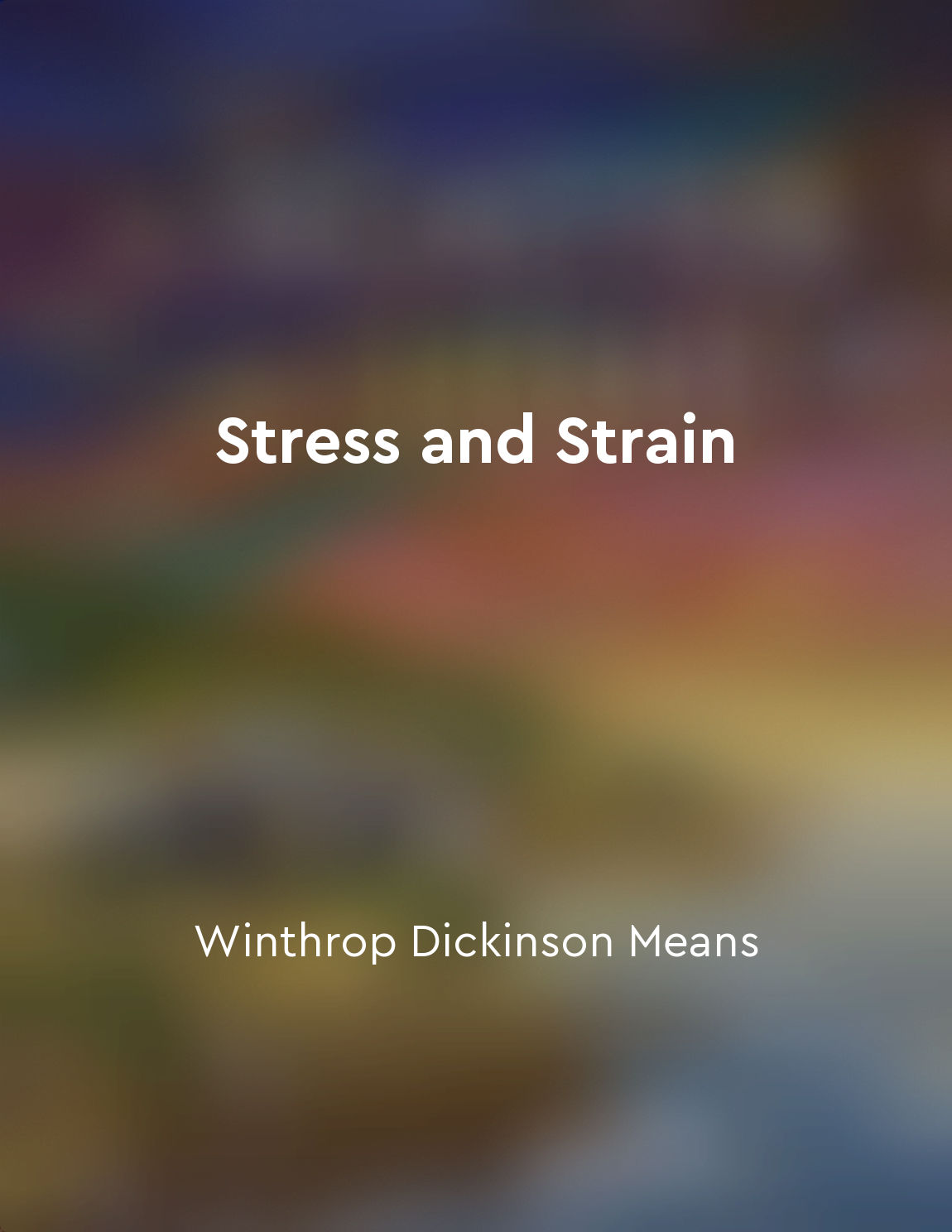Strength, ductility, brittleness from "summary" of Stress and Strain by Winthrop Dickinson Means
The strength, ductility, and brittleness of a material are important properties that determine its suitability for different applications. These properties are affected by the amount of stress applied to the material and its resulting strain. Knowing how these properties interact helps us choose the right material for the job.- Strength, ductility, and brittleness refer to the properties of materials that enable them to withstand applied force or stress without breaking. When a material can be deformed or stretched out significantly before breaking, it is said to have high ductility. On the other hand, when a material breaks easily under minimal amounts of force, it is considered to be brittle. Strength describes how much force a material can handle before failure.
- Some materials demonstrate remarkable strength but lack ductility or vice versa. A material's overall performance depends on its microstructure - microscopic particles, cracks, voids, and flaws present in the material hinder its mechanical performance. The content of these clusters play a major role in determining its overall strength, ductility, and brittleness.
- In general, metals are known for their strength, ductility, and relatively low brittleness. Metals have a favourable strength to weight ratio, which means they can support heavy weights and deform with ease. Their ability to deform aid in absorbing energy and reduce fracture rate. High strength and ductility make them ideal for creating tools and machinery parts for industries such as automobile and aerospace.
- The combination of quality and quantity determines diverse characteristics. For example, temperature and pressure influence the strength, ductility, and brittleness of a material. An increase in one tends to decrease another. Therefore, the mechanical properties of any material vary when exposed to different temperatures, pressures, and environments.
- Ceramics are brittle materials that exhibit low tensile-strength. This refers to a material's resistance to breakage from pulling or stretching forces. However, if designed correctly, ceramics offer fantastic corrosion resistance and heat properties. Many components of electrical equipment rely on ceramic capacitors due to their thermal stability.
- Polymers stand apart from both metal and ceramics by showcasing characteristics of both materials. More specifically, polymeric materials possess greater ductility and impact resistance than ceramics and higher thermal stability than many metals. Additionally, they are generally lighter in weight and require less energy for manufacturing.


